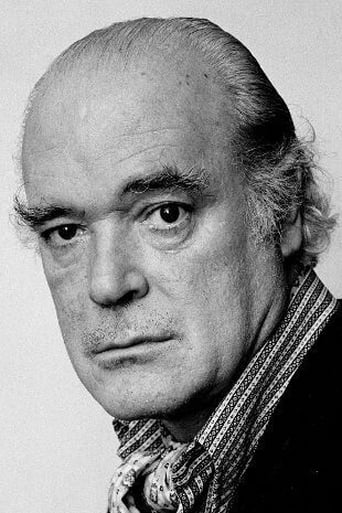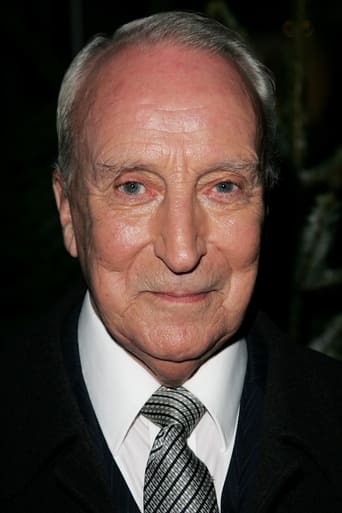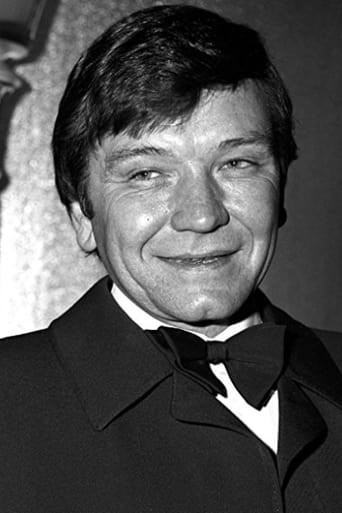The Persecution and Assassination of Jean-Paul Marat as Performed by the Inmates of the Asylum of Charenton Under the Direction of the Marquis de Sade
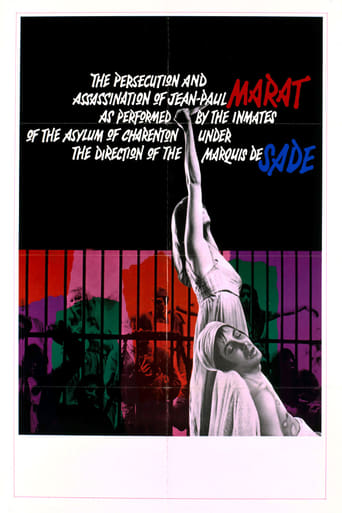
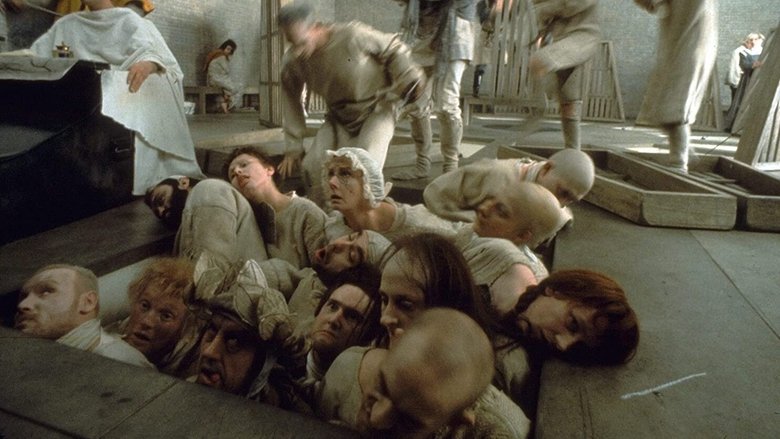
The Persecution and Assassination of Jean-Paul Marat as Performed by the Inmates of the Asylum of Charenton Under the Direction of the Marquis de Sade (1967)
In Charenton Asylum, the Marquis de Sade directs a play about Jean Paul Marat's death, using the patients as actors. Based on 'The Persecution and Assassination of Jean-Paul Marat as Performed by the Inmates of the Asylum of Charenton Under the Direction of the Marquis de Sade', a 1963 play by Peter Weiss.
Watch Trailer
Cast


Reviews
In an insane asylum, the Marquis de Sade directs Jean Paul Marat's last days through a theater play. The actors are the patients.Did something like this actually happen? I could imagine the Maquis de Sade putting this sort of thing together, because what else is he going to do with his time? But did they actually allow this? And, of course, the real inmates could not possibly have been such good actors and singers... could they? As others have noted, this film can be enjoyed by anyone but probably has much more significance for those who grasp the politics and philosophy of the French Revolution. To try to fully comprehend the class distinctions and other angles without some background would be a challenge. To say I fully grasped the competing views of the inmates, Sade and the warden would be a lie.
Peter Brook, for many years the artistic director of the Royal Shakespeare Company, has more than once astounded the theater world with his interpretations of familiar plays by Shakespeare and others. Here's the chance for movie-goers to witness his transformative skills in action. Marat/Sade, which I'd seen previously on stage, is a Brechtian political drama about the French revolution performed in a madhouse under the direction of the notorious Marquis de Sade. Brook's retelling takes advantage of the setting by emphasizing the particular insanities of the major players. Marat, portrayed by Ian Richardson, is coldly rational except when he's not. Patrick Magee's de Sade reflects that personality's obsession with cruelty. But the real brilliance of Brook's choices is captured best by Glenda Jackson, who appears as a victim of narcolepsy cast in the role of Charlotte Corday, Marat's assassin. Jackson's character can barely rouse herself to perform. She's confused. Her diction is odd. She's not convincing as Corday, nor is she supposed to be. She's thoroughly convincing, however, an insane person playing someone who is obsessed with Marat. Other brilliant performances are turned in by Michael Williams as the Herald who announces key scenes; Robert Landon Lloyd as Roux a cleric turned revolutionary who is seen most of the time in a strait-jacket because of his violent behavior, John Steiner as Monsieur Depere, a sexual predator who lusts after Jackson's Corday and a quartet of three men and a woman in comedia del' arte garb who comment on the action in song and verse.It is a bizarre film, difficult to watch at times, but brilliant in its execution. I do not believe there is another director alive or dead who could have done what Brooks did with this script and this talented group of actors. Too bad he didn't do more movies.
The Persecution and Assassination of Jean-Paul Marat as Performed by the Inmates of the Asylum at Charenton Under the Direction of the Marquis de Sade.The title pretty much sums up this powerfully visualized "play", set in 1808, during France's supposed success rate at educating the insane. This play by de Sade which is a scathing dissection of the French Revolution using Marat as the voice for the war as the Marquis takes the role against it. Morality obviously being this is a play from Marquis de Sade is also under the microscope as those that are insane fulfill certain roles under the celebrated masochist's direction. Monsieur Coulmier(Clifford Rose)is the mediator watching de Sade's behavior regarding what his script can and can not say. Blasphemy in this supposed golden age of France can not be warranted so Coulmier, with the assistance of nuns and guards inside, try to keep the deranged--and de Sade--in check.The play itself is told through not only the characters written on page, but from the insane themselves who often intervene on their own behalf. The ending is a fine slap in the face of the so-called success the French asylums seemed to have employed as the maniacs, after finishing, attack all the normal folk inside(two aristocratic women are audience members inside the cell--what were they thinking?)as Marquis relishes the chaos with glee.The staged film is disturbing, bleak, but profound and spellbinding. The way the camera moves throughout the cell(and several shots through the bars and on the darkened audience outside the cell)is hypnotic and deeply luridly fascinating. The cast is so good, they really convinced me I was watching a directed play using loonies!
It has been a while since I have seen this film so I can't remember everything, but I'm going write a blurb based on how I remember feeling after viewing it. One aspect of the movie was brilliant and another was poor.The movie was generally boring to me and I fault the director for that. It felt like a filmed play, which may have been the intention, as it was originally a play. But I don't think it worked. The most engaging performance was that of Patrick Magee, who was already a seasoned film actor at the time, and I truly believe he helped bring much of the cinematic qualities. The rest of the performances felt amateurish, relatively, since portraying those who are mentally disturbed allows for more suspension of disbelief on the part of the audience. The pacing needed to be more dynamic but it wasn't. And I would have liked it to be more pleasant to the eye with better photography and set design -- some eye candy to keep the interest. I say that because what ends up happening is that words become the main focus. Focusing entirely on words takes away the essence of a film. You have the opportunity to include so much subtlety and such a unique perspective and to not have it seems a shame.But now there is the other side. The screenplay, the story and the concepts are nothing short of phenomenal. It is highly academic but not arrogant and is very rewarding if the investment in understanding the history relied on is made. So interesting was the commentary and the philosophy it asserted and so clever was the manipulation and method by which it was illustrated. I give great credit to all of the writing involved.Although, I was not impressed with this film either cinematically nor in the sense of a significant number of the performances, the rest was enough for me to award it a seven out of ten. I feel it was enough to make it worth viewing and I would love to see the play if directed as cleverly as the words deserve. It was smart and different... two commendable qualities that are in short supply.


